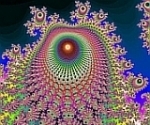In the bgalb arrow-marked one hour section, it looks to me like there are at least 5 hypopneas. And maybe more, if each little stair step leading into the last two big plateaus of that hour are counted. I don't think the last two long blue plateau lines that are marked with the "apneas" are marked correctly. I think the long horizontal blue lines have nothing to do with apneas and are indicating two more hypopneas during the latter part of that hour.
But I could be very wrong about that. I never liked the way the autoscan graph displays hypopnea info.
Actually, I thought the notion that a horizontal blue line extending across an hour showed "an hour long hypopnea" had been laid to rest by James Ball's good post a long time ago...almost two years ago...in this thread on TAS:
http://www.talkaboutsleep.com/message-b ... hp?t=11178
The quotes below are from that thread in July 2005.
frequenseeker - starting the topic on Jun 07 2005 wrote:the graph showed each of the 2.5 hypopneas occurred in each of the last three hours of the night, and each lasted at least 45 minutes.
James Ball on Jul 13 2005 - page 2 wrote:Frequenseeker,
It has been awhile since I have posted to this board. As you may recall, I have the Reslink and the associated software for the Resmed VPAP III. I have been monitoring my nightly data since Sept 9, 2004. One thing I noticed is that the software records events per hour and truncates the data at the beginning of each hour. So, if you have one or two HI's at the beginning of the hour, say 5:02 am, it will record 2 HI until 6:00 am. So, if you have 2 or 3 event at the beginning of the hour the rest of the hour will be a plateau until the next hour arrives and you start back at zero. I am thinking that this maybe what you are seeing in your data. The actual HI events probably last for a short time. In fact, as far as I can tell, the software does not tell you how long one is in an hypopnea state. The software will tell you how long you were in apneas by marking each event with a number (number of seconds in apnea) but it does not do this for HI. It simply puts a blue mark on the graph indicating an HI had occurred. You must have reduced respiration for at least 10 seconds to be marked as have an HI. If you were really having hyponeas for 45 min your HI would be very, very high. One time I had a cold and could not breathe through my nose and used a full face mask. It was better than nothing but not much better. There were stretches of time during the night where I had an AHI of 90+ - just like my sleep study. I was having a lot HI and AI and they were recorded as single events.
Bottom line, the software does not record time in HI. I do no think you were in hyponea for 45 min if the only indication you had was the software.
(bold emphasis mine)
frequenseeker on Jul 13 2005 wrote:Jim, whew thanks very much!!
Great to know that I am not being moribund for 45 minutes every time there is the dreaded long blue line on the graph
So, I don't understand why bgalb was told this, in March 2007:
frequenseeker wrote:Yes, got it, yes, this is what mine looked like also on my VPAP III before I found the CO2 info.
I had manuevered my AI to .5 and HI to 3-4 -- but as you point out, the hypopneas were lasting about a full hour "each". Seems like the machine just counted the beginnings. I was in deep trouble all night as my body tried to conserve CO2..
I had asked around for months about these hour long hypopneas. My local doctors, DME, no help.
(bold emphasis mine)
I think it's good to make people aware of CSBD --complex sleep breathing disorder. But I also think it's
far more likely that when
most people are not feeling well after being on cpap for awhile, the problem just might be underlying health issues that have nothing to do with sleep disordered breathing and are ongoing despite "cpap" doing its part of the job quite well.












